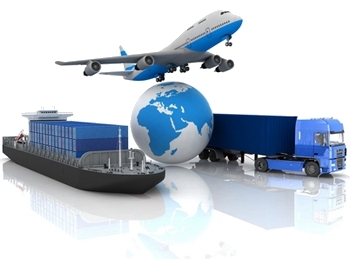
The Future of Logistics Services In India- Challenges and Strategy
Logistics is a primary sector of Indian economy.One of the keys to success for every logistics service provider in India is efficient management. In this article, we explore various aspects of Indian Logistics services industry and its current position.
What are the logistics services needed in India
There is no doubt that the logistics services in India is growing at a rapid pace. The country has become a hub for many international companies who are looking to take advantage of the burgeoning economy. However, with this growth comes challenges that must be addressed in order to ensure the continued success of the sector.
One of the biggest challenges facing logistics services in India is the lack of infrastructure. The country's road and rail network is not adequately equipped to handle the increasing volume of traffic. This results in delays and higher costs for businesses that rely on these services. In addition, there is a lack of warehousing and storage facilities, which further complicates the situation.
Another challenge is the lack of skilled labor. The current workforce is not able to keep up with the demands of the growing sector. This results in a shortage of qualified personnel, which leads to higher wages and increased costs for businesses.
The government has taken steps to address these challenges, but more needs to be done. The private sector also needs to play a role in developing solutions. Only by working together can the logistics sector in India continue to grow and meet the challenges of the future.
Challenges faced by the Indian Logistics Industry
The Indian logistics industry is currently facing a number of challenges, which are hampering its growth. These challenges include:
1. Infrastructure: The lack of adequate infrastructure is a major challenge faced by the Indian logistics industry. The current infrastructure is not able to meet the increasing demand for logistics services. This results in higher costs and longer delivery times.
2. skilled workforce: There is a shortage of skilled workers in the Indian logistics industry. This is a result of the lack of training and development programmes for workers in this sector. As a result, companies have to rely on foreign workers, which increases costs.
3. Regulatory environment: The regulatory environment in India is complex and often contradictory. This makes it difficult for logistics companies to comply with all the regulations and leads to higher costs.
4. Economic slowdown: The economic slowdown in India has led to lower demand for logistics services. This has resulted in lower revenues and profitability for logistics companies operating in India
Reasons why the logistics service industry has so many challenges
1. India is a vast and complex country with many different types of terrain, weather conditions, and infrastructure. This makes it difficult to provide reliable and efficient logistics services across the country.
2. The Indian logistics service industry is highly fragmented, with many small players providing services in specific regions or niches. This makes it difficult to achieve economies of scale and to compete with larger players.
3. The infrastructure in India is not well developed, which adds to the challenges of providing efficient logistics services. Roads are often in poor condition, and there is a lack of reliable transportation options.
4. Many businesses in India still rely on manual processes for their logistics needs, which can be inefficient and error-prone.
5. Corruption is a major problem in India, and this can impact the logistics industry in a number of ways. For example, bribes may be required to get shipments through customs quickly or to obtain permits for transport vehicles.
6. The Indian logistics service industry faces stiff competition from foreign players who have more experience and resources. These companies often have an advantage in terms of technology, infrastructure, and financial resources.
Strategy to overcome current challenges in Indian Logistics
The Indian logistics industry is currently facing various challenges, such as high transportation and warehousing costs, lack of standardization, and infrastructural bottlenecks. In order to overcome these challenges and ensure future growth, the industry will need to adopt a comprehensive and integrated approach.
One of the main challenges facing the logistics industry in India is the high cost of transportation and warehousing. This is due to a number of factors, such as the lack of economies of scale, high fuel prices, and infrastructural bottlenecks. In order to overcome this challenge, logistics service providers will need to focus on achieving economies of scale through consolidation and network expansion. In addition, they will need to invest in fuel-efficient vehicles and adopt new technologies that can help reduce transportation costs.
Another challenge facing the Logistics Companies in India is the lack of standardization. This results in a fragmented market with many small players, which makes it difficult for logistics service providers to achieve economies of scale. In order to overcome this challenge, the industry will need to adopt a more standardized approach, including a unified regulatory framework and standardized operating procedures.
Transportation services in India
Finally, infrastructural bottlenecks are also a major challenge
Conclusion
The logistics industry in India is at an inflection point. The sector has been growing at a rapid pace and is expected to reach $300 billion by 2020. However, the industry is facing a number of challenges that need to be addressed in order to sustain this growth. In this article, we have highlighted some of the key challenges faced by the Logistics Companies in India and proposed a few possible solutions. We believe that by addressing these issues, the Indian logistics industry can continue to grow at a rapid pace and become a world-leader in the coming years.